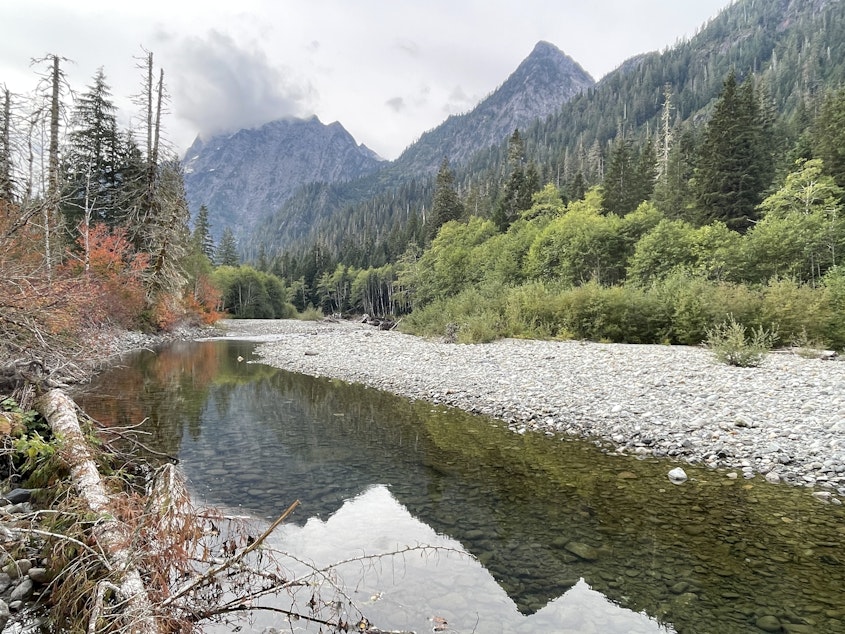What the new federal climate report says about the Northwest

On Tuesday, the federal government released an update to its most important report on how climate change is affecting the U.S.
The congressionally ordered Fifth National Climate Assessment (NCA5) is the effort of 13 federal agencies and a host of university, tribal and nonprofit experts. The aim is to provide insights that help local leaders, ranging from urban planners to hospital managers, make decisions in preparation for and in response to climate change.
RELATED: Want some good news? King County streams are getting healthier
Its release comes toward the end of what scientists say is likely to be the warmest year on record.
"Beyond question, the climate crisis is already here," said John Podesta, Senior Advisor to the President for Clean Energy Innovation and Implementation, during a press call highlighting the report.
Sponsored
For most Americans, the impact of climate change is evident through exposure to extreme weather events, government officials said. In the 1980s, the country experienced a major disaster every four months, on average. Now, there's a billion-dollar disaster every three weeks.
The good news, they said, is that since the last climate assessment was released five years ago, communities across the country have made significant strides in responding, and adapting, to climate change. That includes deploying renewable energy, implementing urban heat plans and trying innovative agricultural practices.
Still, much more work is needed -- and fast -- to reach greenhouse gas reduction targets; the Biden Administration wants to hit net zero emissions by 2050.
Mike Chang, a director at Cascadia Consulting Group based in Seattle, is the lead author of the Northwest chapter focusing on Washington, Oregon, and Idaho.
Chang highlighted the development of more advanced models since the last assessment, allowing scientists to better attribute weather events to climate change. For example, models indicate that the 2021 Pacific Northwest heat dome, responsible for over 1,000 deaths, was 40 to 150 times more likely to occur due to climate change, he said.
Sponsored
RELATED: China and the U.S. pledge to step up climate efforts ahead of Biden-Xi summit
The report emphasizes various impacts of climate change on the Northwest, predicting warmer winter temperatures, reduced mountain snowpack, more frequent and severe droughts, increased extreme rainfall, and larger, higher-elevation wildfires. Chang's team found that rural, low-income, and Indigenous communities face disproportionate exposure to these stressors.
More days of hazardous smoke
Wildfire smoke events in western states have already been linked to increased hospital admissions for respiratory issues in adults over 65 and are projected to lead to more asthma cases and emergency room visits.
North Idaho, in particular, is expected to bear a significant burden, potentially increased ER visits due to smoke by 29.4 for every 10,000 people under a very high emissions scenario.
Sponsored
As Boise State Public Radio reported, the Nez Perce Tribe has started several initiatives to raise awareness about the harmful health effects of wildfire smoke. The Tribe is distributing air filters and fans to vulnerable community members to alleviate the health impacts of breathing wildfire smoke indoors.
Vulnerability of Snake River sockeye
In a case study, the NCA5 highlighted challenges faced by Snake River sockeye returning to Idaho's high alpine lakes. The fish face numerous obstacles on their migratory routes, including overfishing, water withdrawals, and not least of all, dams.
But climate impacts also leave their mark on the endangered species. A 2015 marine heat wave, dubbed "The Blob," severely damaged fisheries, including sockeye runs.
"In a single year, we saw that it almost wiped out all of the progress that we had made in terms of restoring that salmon population," Chang said.
Sponsored
Under certain climate scenarios, portions of the Salmon River could experience temperature increases of several degrees by the 2040s and could lose nearly half their streamflow, threatening adult migration.
The Shoshone-Bannock Tribe is actively working to restore salmon populations and to preserve the cool and clean water in Idaho's mountains as habitat for the fish that return.
Expanding development in the wildland-urban interface
The report also highlighted the significant growth of homes in the outskirts of Northwest cities like Boise, Spokane, and Bend over the past three decades. This development, away from city centers and into the wildland-urban interface, can increase exposure to wildfires, Chang said, but also flooding. It can also lead to more human-started fires and can increase risks for people and property.
Still, effective land use planning and prevention efforts can help mitigate these climate hazards, the report found.



